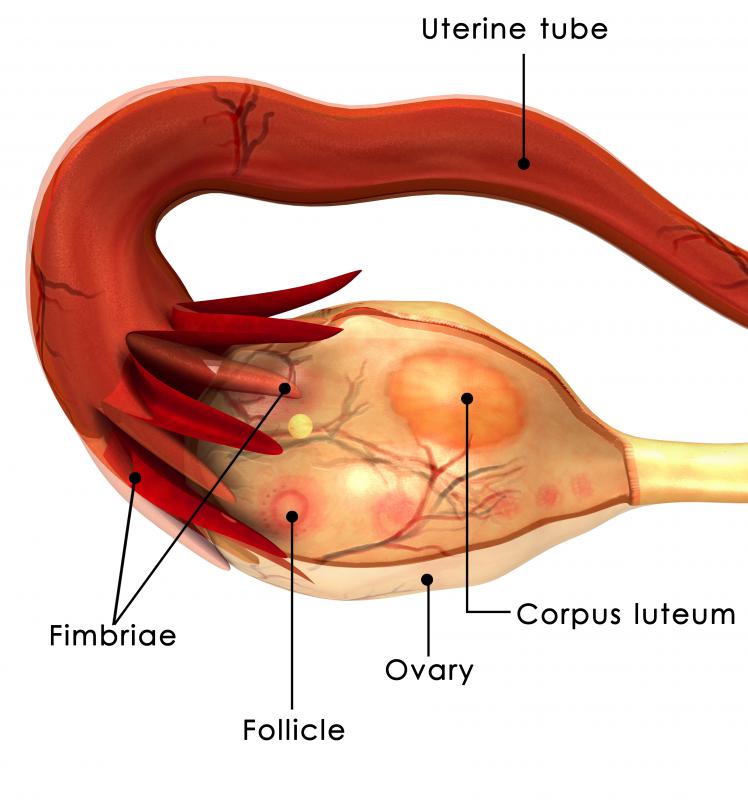At WiseGEEK, we're committed to delivering accurate, trustworthy information. Our expert-authored content is rigorously fact-checked and sourced from credible authorities. Discover how we uphold the highest standards in providing you with reliable knowledge.
What Happens to Cervical Mucus After Ovulation?
Cervical mucus after ovulation is often scant since it is beginning to dry up after days of being copious and slippery. Its quality is typically sticky, which is not considered sperm-friendly, and it may have a cloudy look to it. The mucus should dry up within a few days as the body prepares for either implantation or menstruation, and the cervix should start lowering its position so that it is easy to reach by hand. Women who become pregnant after ovulation may begin to notice creamy white discharge that will likely continue for nine months, while those who are not pregnant should expect their period within about two weeks of ovulation.
One of the most important functions of cervical mucus is to make it easier for the sperm to reach the cervix so that conception can take place. For this reason, it is usually slippery and abundant, as this is considered the most helpful consistency for sperm. Of course, the cervical mucus does not need to be slippery since there is no longer an egg to fertilize. Therefore, the body has no desire for sperm to reach the cervix, which is why the mucus begins to dry up.

In fact, the cervical mucus that appears after ovulation may become so scant that it might be difficult for most women to notice it at all. While the mucus may show up in the underwear quite frequently during the fertile part of the cycle, it is often necessary for women to check their cervix to see any mucus after ovulation, since it is not usually abundant enough to come out on its own. This task is made easier by the fact that the cervix tends to lower its position right after ovulation, allowing women to reach it with clean fingers in order to determine where they are in their cycle.

After ovulation, most women can expect to get their period within two weeks, in which case they may notice a light spotting of blood just days after the scant cervical mucus disappears completely. Of course, some women rarely experience pre-period spotting, making a sudden flow of blood the first sign of this part of their cycle. For some women who notice pink or brown spotting following the disappearance of their fertile cervical mucus after ovulation, the period never shows up, as they are experiencing implantation bleeding brought on by conception. Such women can expect their cervical mucus to soon become white, creamy, and abundant, as this is the most common type of discharge during pregnancy.
AS FEATURED ON:
AS FEATURED ON:















Discussion Comments
@ElizaBennett - That's a good point that it can be tricky to tell.
But for some women, taking the basal body temperature is not a good option. If you wake up at different times every day for whatever reason, or do shift work, you won't be able to see the temperature shift as clearly.
In that case, checking your cervix can be your second sign. Before ovulation, the cervix will gradually soften and drop, and then after ovulation it will slam closed and get high and hard again (I might be mixing up the high and low).
Something that's tricky about cervical mucus and ovulation is that your body sometimes takes time to work up to ovulation. Especially if, for instance, you're breastfeeding, you might see your cervical mucus increase and lessen without ovulating.
The key is that it will dry up suddenly after ovulation, whereas it might taper off gradually if you did not ovulate. But that's subjective and it can be tricky, so it's better to take your basal body temperature as a second sign. That way, you will know for sure when you've ovulated--and when to take a pregnancy test, if necessary!
Post your comments